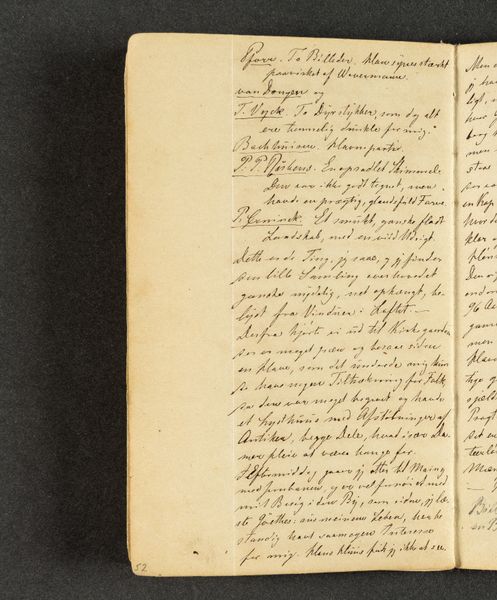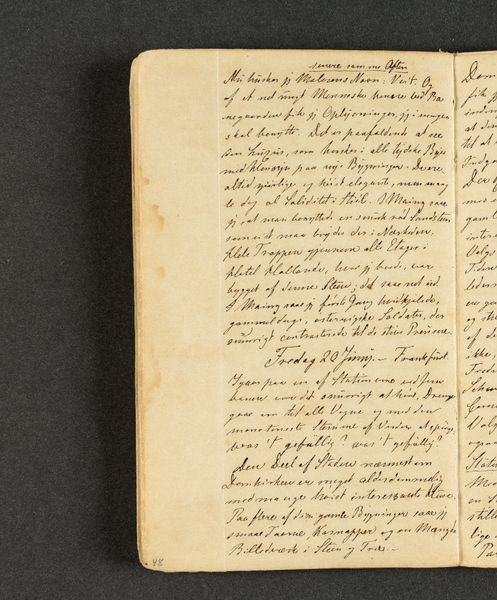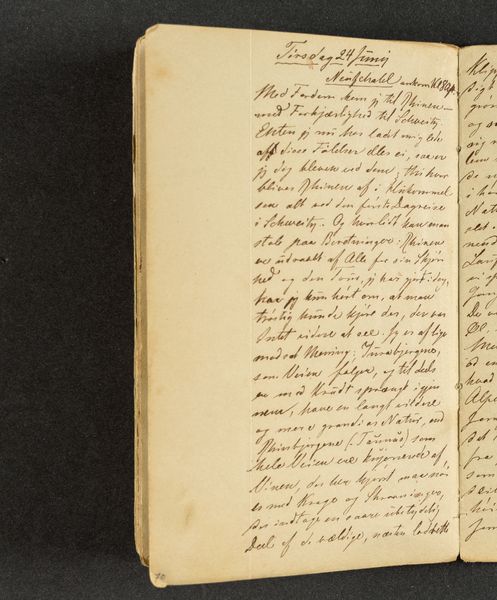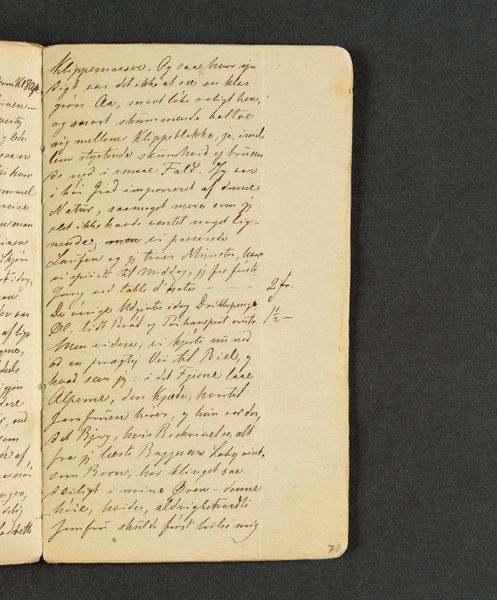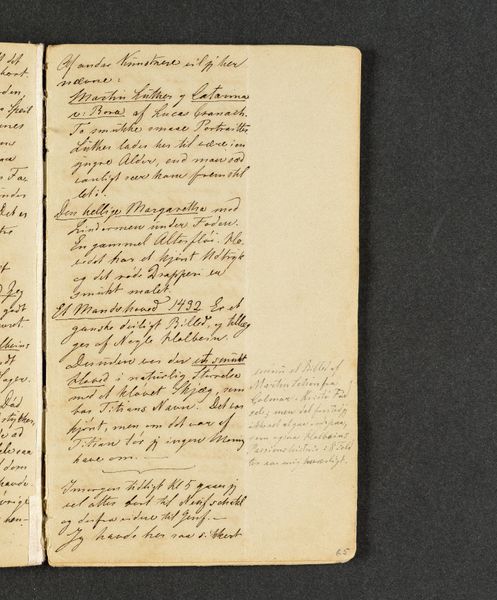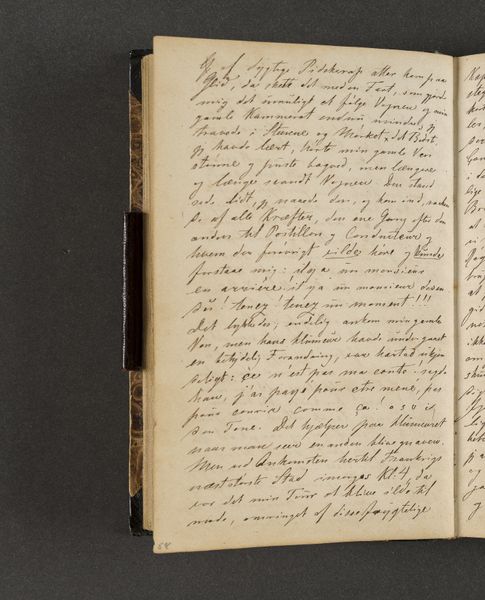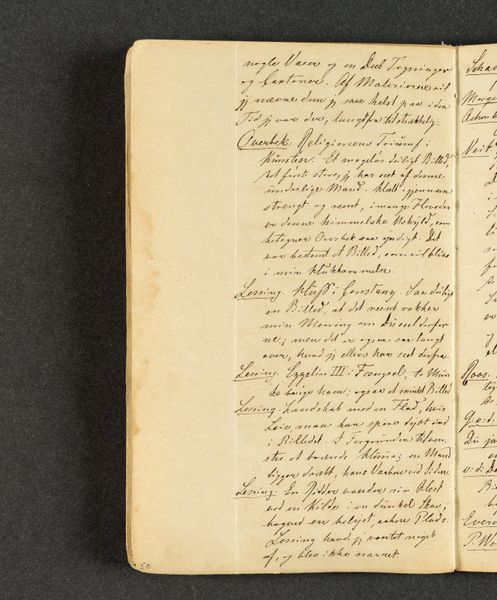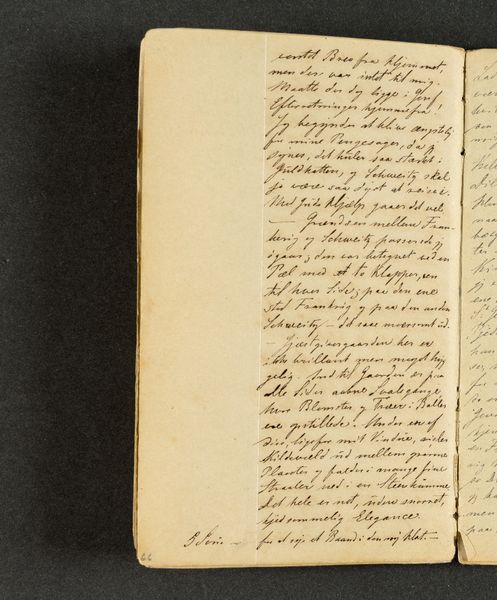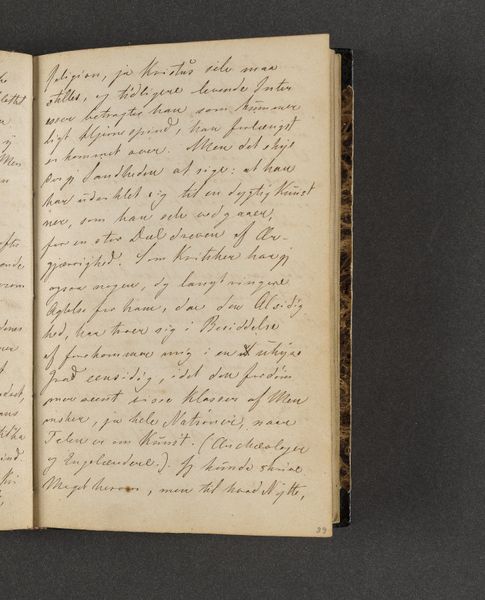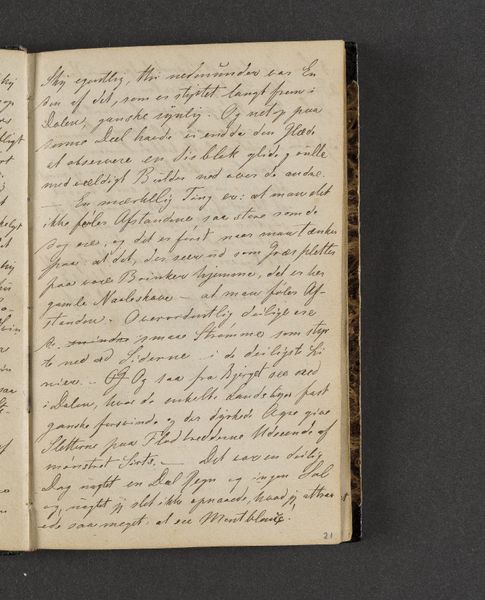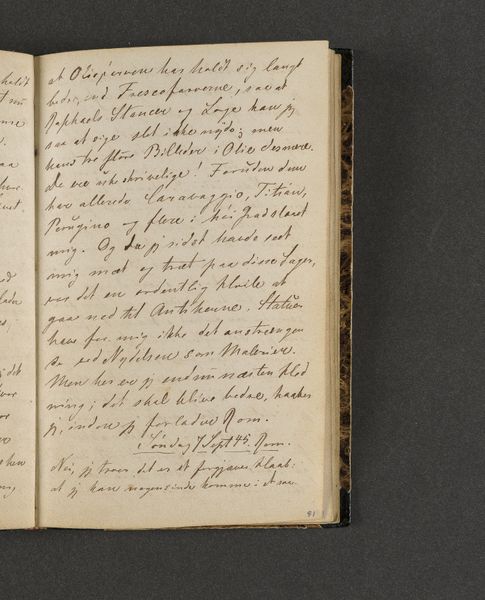
drawing, textile, paper, ink
#
drawing
#
narrative-art
#
textile
#
paper
#
ink
#
journal
#
coloured pencil
#
romanticism
#
sketchbook drawing
#
sketchbook art
Dimensions: 163 mm (height) x 98 mm (width) (bladmaal)
Editor: So, here we have Johan Thomas Lundbye’s "Rejsedagbog" from 1845, created with drawing, textile, paper and ink. Looking at this page spread, it’s fascinating how the personal and the artistic blend together. What story does this seemingly simple journal page tell within its historical moment? Curator: That's a perceptive observation! Lundbye's journal offers a valuable glimpse into the artist's mindset, but more broadly, it highlights the shifting role of the artist in the 19th century. Journals, letters, sketches—these became important tools for shaping the artist’s public image as a sensitive, intellectual individual engaged with the world around them. Consider how this practice coincides with the rise of museums and art criticism, institutions that simultaneously elevated and scrutinized artistic expression. Editor: It's almost as if the artist is performing a role for a future audience, carefully crafting their persona through these writings. Curator: Precisely. And it raises interesting questions about authenticity and the constructed nature of artistic identity. Is Lundbye being entirely sincere, or is he also aware of how his private thoughts might someday be interpreted? The act of writing itself is never neutral. Editor: That makes me wonder about the intended audience, too. Was this solely for personal reflection, or did Lundbye envision others reading this someday? Curator: That's key. Even in private writings, the awareness of a potential reader – real or imagined – inevitably shapes the narrative. In the 19th century, romantic notions about artists and their 'genius' circulated widely. It’s probable that he recognized his journal might hold future interest, subtly influencing the very words and images he chose to record. How does knowing this potential influence affect our viewing experience? Editor: I hadn’t considered the performative aspect so deeply. It shifts my understanding from a simple personal document to a carefully constructed narrative within a larger cultural context. Curator: Indeed. By recognizing how socio-political forces shape the reception and even the production of art, we gain a far richer appreciation of works like this.
Comments
No comments
Be the first to comment and join the conversation on the ultimate creative platform.
